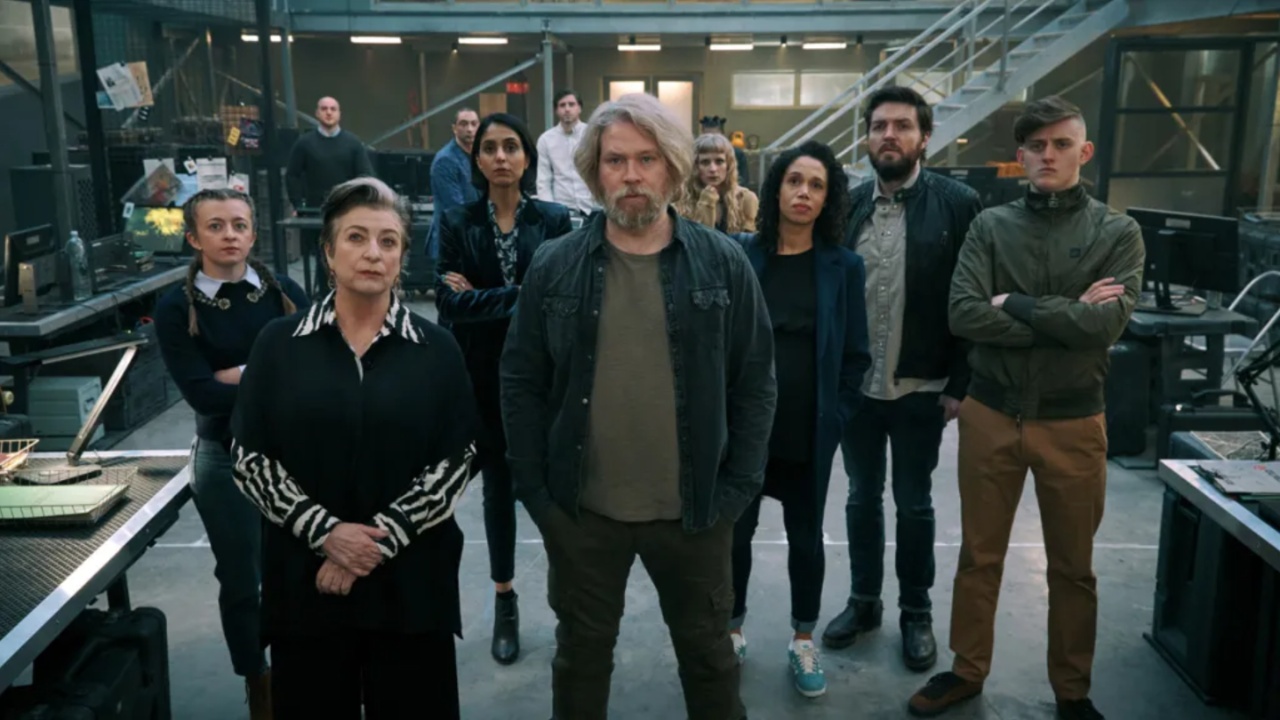At the end of Season 1, George remains entangled in the complex loops of time and space, facing more questions than answers. After multiple resets, he becomes an operative for The Lazarus Project, an organization dedicated to preventing catastrophic events. As George adjusts to his new role, doubts about the morality and purpose of the Project begin to surface. Other characters face similar struggles, functioning as pieces in a larger mechanism. The season finale intensifies these challenges, pushing the boundaries of the phenomenon and testing both the characters’ intellect and emotional resilience.
The finale reveals that the latest time loop is triggered by the collision of two black hole singularities, an event capable of erasing the universe. Wes explains that the phenomenon is beyond human control. George realizes that the singularity may have been artificially caused by someone trying to replicate The Lazarus Project’s time-reset abilities. This suggests that the catastrophe is a malfunction, and the key to preventing it may lie in locating a secondary device. Meanwhile, George discovers a bloodied note while disposing of Shiv’s body, hinting at further revelations, and the team narrows its suspects to former agent Zhang Rui.
Archie tracks down Rui, who can also perceive time loops because of a Chinese government initiative similar to The Lazarus Project. Rui reveals she was assigned to protect Janet but lost her because of George and Shiv’s interference. Archie quickly grasps the truth and decides to work with Rui to find Janet. This development highlights the international stakes of temporal manipulation and shows that the Project is only one part of a worldwide effort to control time. Rui’s perspective emphasizes the complexity of the mission, combining personal motives with global consequences.

George Faces Emotional Strain While Allies Gain Awareness and Janet Remains Missing in Time
Throughout the loops, George struggles with repeated losses, including Shiv’s death and the death of Sarah in some iterations. He experiments with saving lives, learning from the blood-soaked note, and discovers that his neighbor is a paramedic, a critical resource. The finale emphasizes the personal cost of time manipulation, showing George’s emotional vulnerability and the moral weight of his decisions. Each loop provides him opportunities to test strategies, but the human element remains unpredictable, intensifying the pressure of his role.
A major twist occurs when Sarah, George’s former partner, gains awareness of the time loops by using a memory serum left by George. Her understanding removes the need for secrecy and transforms their relationship into a partnership. George’s choice to share the serum demonstrates both vulnerability and strategic foresight because it allows Sarah to assist him while strengthening their bond. This revelation also rekindles past possibilities, including marriage and children, combining personal stakes with the ongoing temporal crisis and expanding the narrative’s emotional depth.
Janet’s true whereabouts are revealed by her husband, Rebrov. He explains that she is not present in the current reality because she has been sent back to 2012. This is discovered through coded messages, including the phrase “It will be worth the wait,” which Janet sent as a cry for help. Her absence adds urgency to the Project’s mission because rescuing her requires overcoming temporal checkpoints. The narrative frames her captivity as a consequence of the new singularity and a method for forcing her to research solutions, illustrating the personal and professional stakes connected to temporal anomalies.

Rebrov Joins Forces with the Project to Save Janet and Prevent Extinction
Faced with the impossibility of rescuing Janet alone, Rebrov teams up with Wes and The Lazarus Project. He recognizes that his objectives align with the organization’s, particularly in preventing repeated cycles of extinction. Rebrov also considers the fate of his daughter, likely kidnapped across timelines. His collaboration highlights the moral complexity of the characters because personal grief and high-stakes duty intersect. Rebrov’s motivations shift from ending the world to preserving his loved ones, revealing a more nuanced, emotionally charged perspective that complicates the narrative’s antagonistic forces.
Shiv’s life remains in danger after a gunshot to the chest, an injury he has suffered multiple times in previous loops. George, with the aid of the paramedic neighbor, performs first aid without involving emergency services, a task made more difficult by the circumstances. Though Shiv stabilizes and regains consciousness, the bullet continues to pose a threat. His survival is significant not only for the mission but also for team dynamics, as his rivalry and potential collaboration with George provide narrative tension and character growth. These events set the stage for future challenges.
The finale explores how time manipulation impacts personal relationships. George’s dynamic with Sarah and Rebrov’s family-driven motives demonstrate the collision of emotional and professional responsibilities. Decisions carry consequences that affect both individual lives and the broader temporal framework. The loops force characters to confront ethical dilemmas, showing that even in a world guided by scientific precision, human emotion remains unpredictable and influential. This balance of personal and global stakes gives the series a compelling emotional core.
The finale leaves multiple storylines unresolved, including Janet’s fate, the secondary singularity, and Shiv’s ultimate survival. George and Sarah’s renewed partnership, Rebrov’s alignment with the Project, and the global nature of time-related threats set the stage for a more complex second season. The narrative concludes with both resolution and suspense, emphasizing the intricate challenges of controlling time while preserving relationships. The finale ensures that viewers remain invested in the interplay of human emotion, cosmic phenomena, and ethical dilemmas that define The Lazarus Project.



